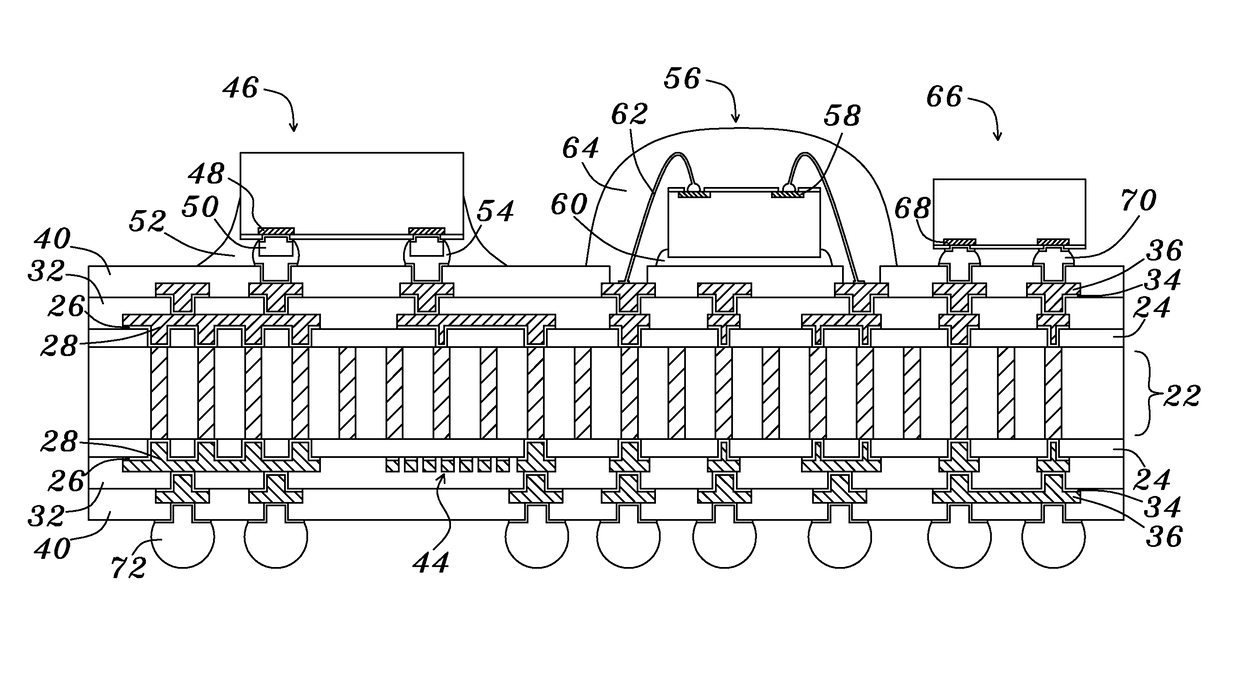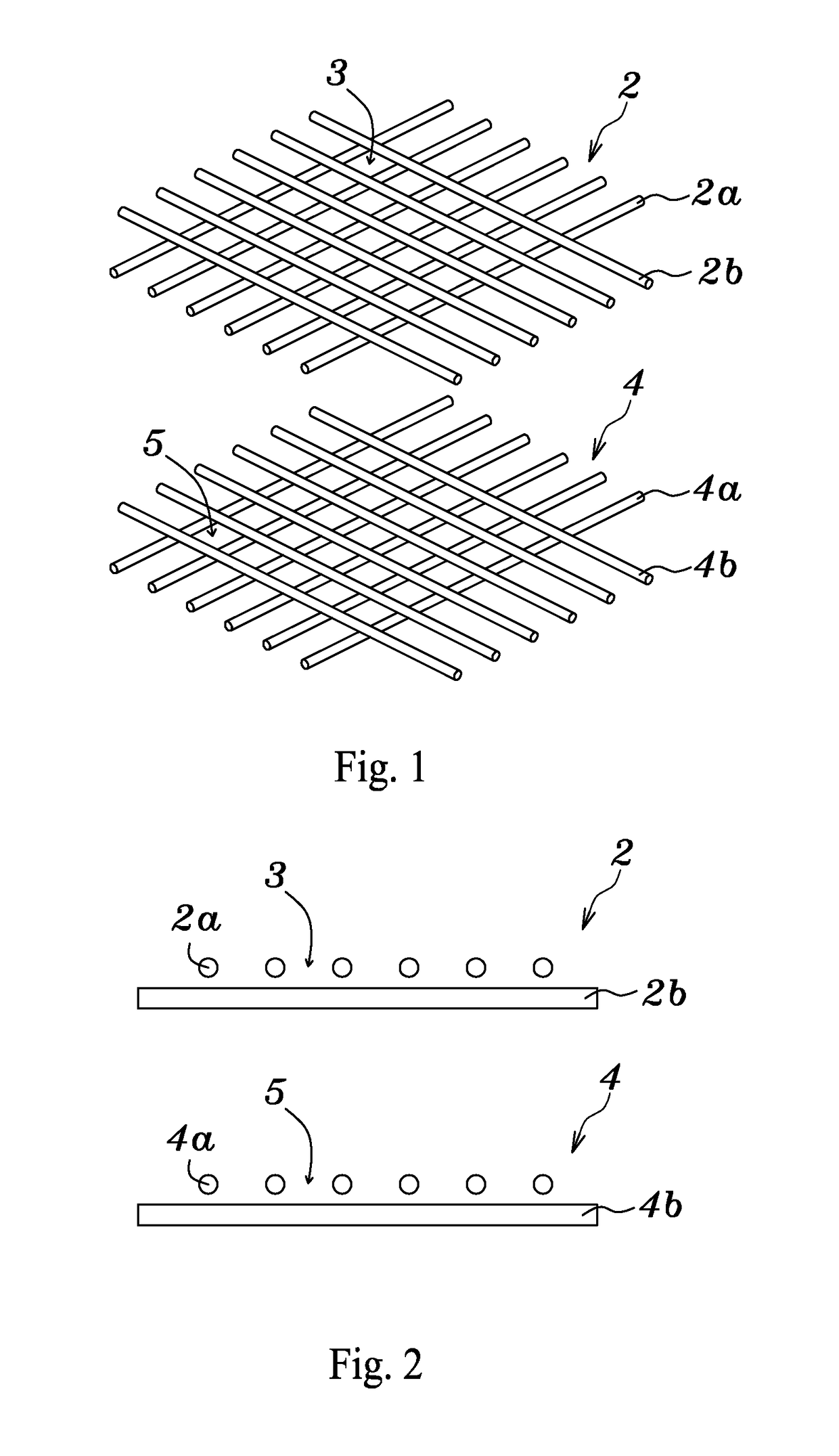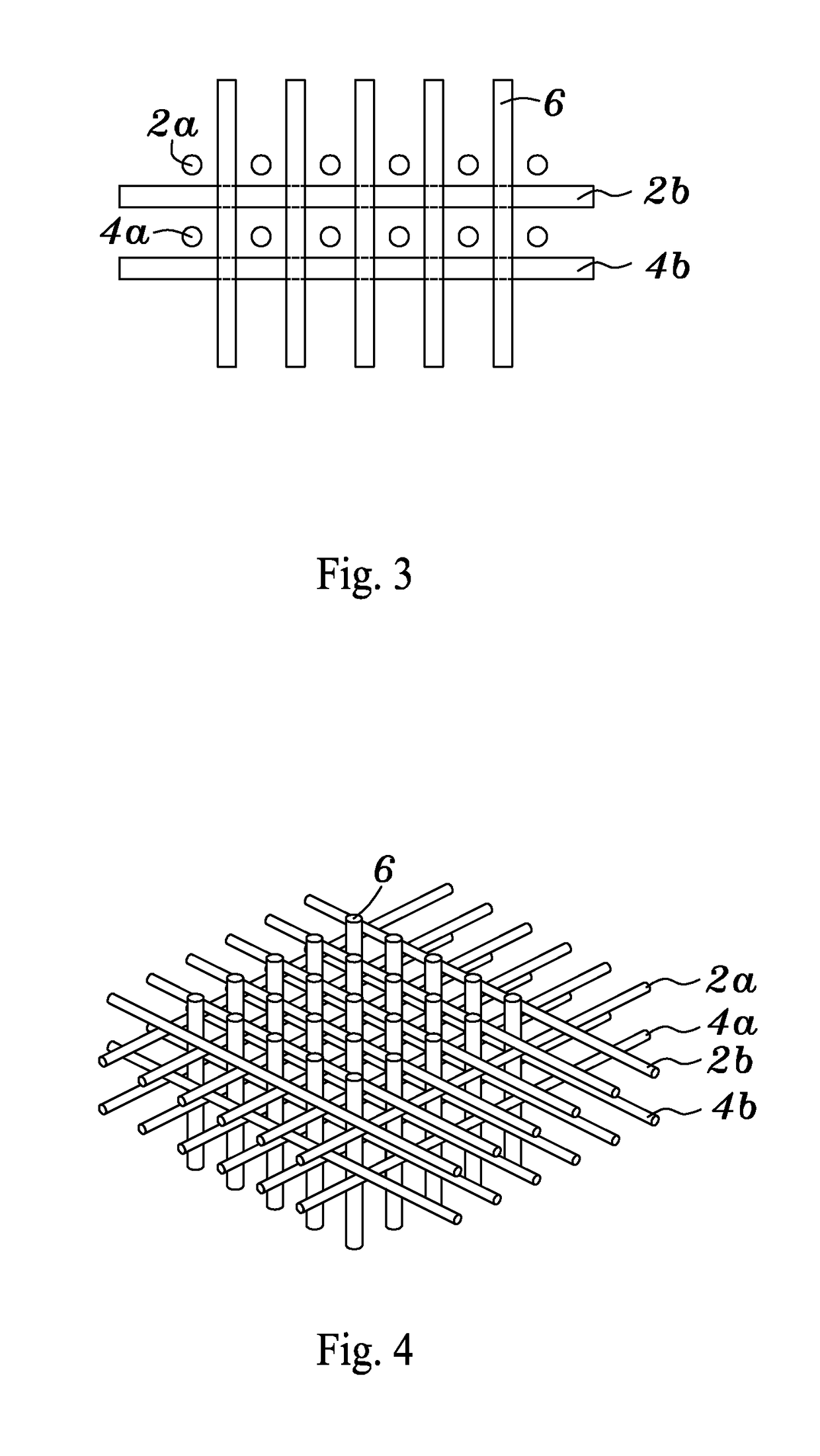Method for fabricating glass substrate package
a technology of glass substrate and packaging, which is applied in the direction of final product manufacturing, sustainable manufacturing/processing, fixed capacitors, etc., can solve the problems of increasing the negative impact of circuit performance, significantly degrading the chip performance, and increasing the capacitance of these wires
- Summary
- Abstract
- Description
- Claims
- Application Information
AI Technical Summary
Benefits of technology
Problems solved by technology
Method used
Image
Examples
Embodiment Construction
[0036]FIG. 1 illustrates a three-dimensional view of a net 2, 4, wherein the net 4 is under the net 2, wherein the net 2 comprises multiple Y-axis traces 2a and multiple X-axis traces 2b under the Y-axis traces 2a, and wherein the net 4 comprises multiple Y-axis traces 4a and multiple X-axis traces 4b under the Y-axis traces 4a. Multiple gaps 3, 5 form in the net 2 and 4. Each of the traces 2a, 2b, 4a and 4b is easily move to change the size of gaps 3 and gaps 5. The diameter (or width) of traces 2a, 2b, 4a and 4b are the same, such as between 10 and 30 micrometers, between 20 and 100 micrometers, between 40 and 150 micrometers, between 50 and 200 micrometers, between 200 and 1000 micrometers or between 500 and 10000 micrometers. The traces 2a, 2b, 4a and 4b may be metal traces or polymer traces, such as copper traces, copper-gold alloy traces, copper-gold-palladium alloy traces, copper-gold-silver alloy traces, copper-platinum alloy traces, copper-iron alloy traces, copper-nickel a...
PUM
| Property | Measurement | Unit |
|---|---|---|
| glass transition temperature | aaaaa | aaaaa |
| glass transition temperature | aaaaa | aaaaa |
| width | aaaaa | aaaaa |
Abstract
Description
Claims
Application Information
 Login to View More
Login to View More - R&D
- Intellectual Property
- Life Sciences
- Materials
- Tech Scout
- Unparalleled Data Quality
- Higher Quality Content
- 60% Fewer Hallucinations
Browse by: Latest US Patents, China's latest patents, Technical Efficacy Thesaurus, Application Domain, Technology Topic, Popular Technical Reports.
© 2025 PatSnap. All rights reserved.Legal|Privacy policy|Modern Slavery Act Transparency Statement|Sitemap|About US| Contact US: help@patsnap.com



